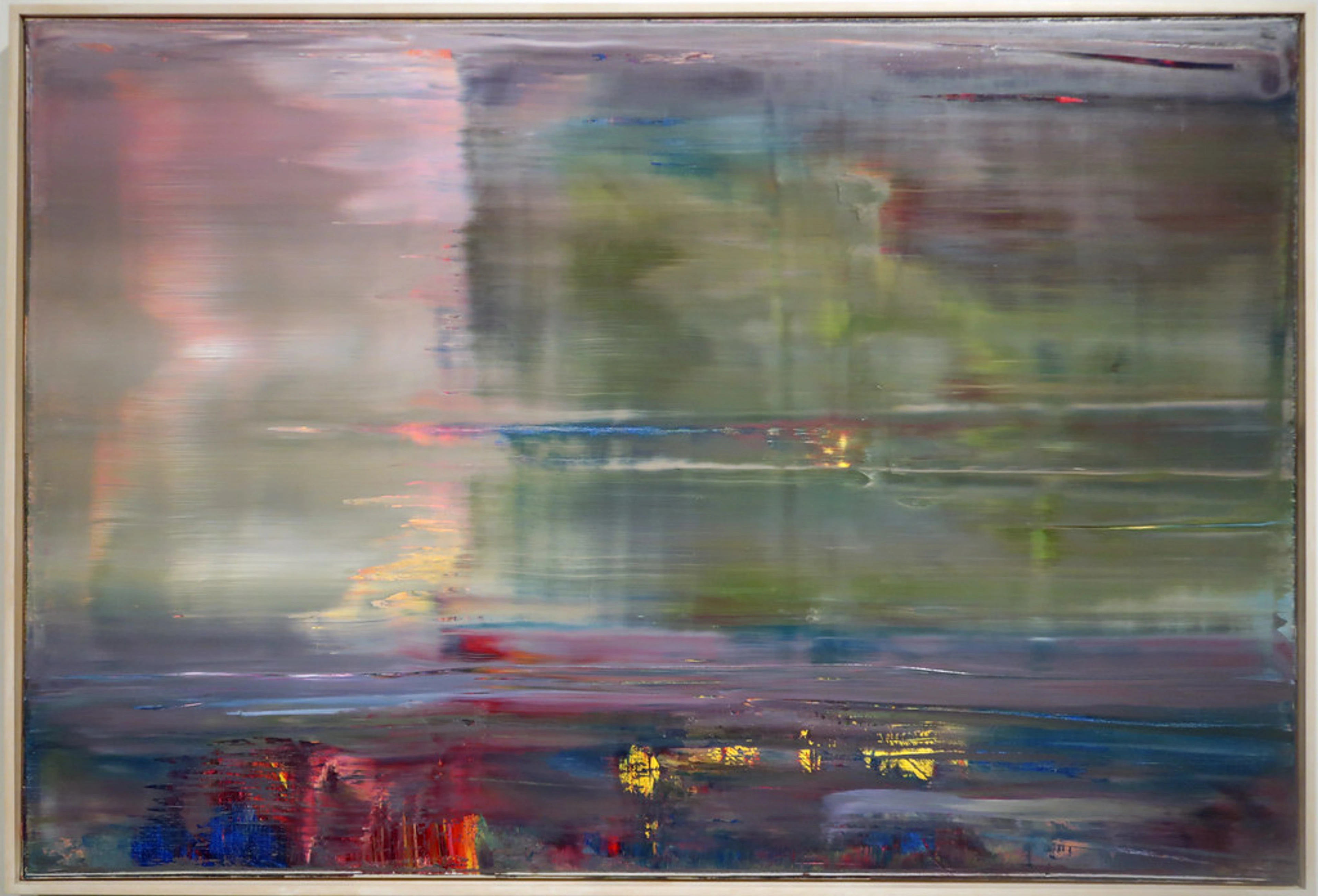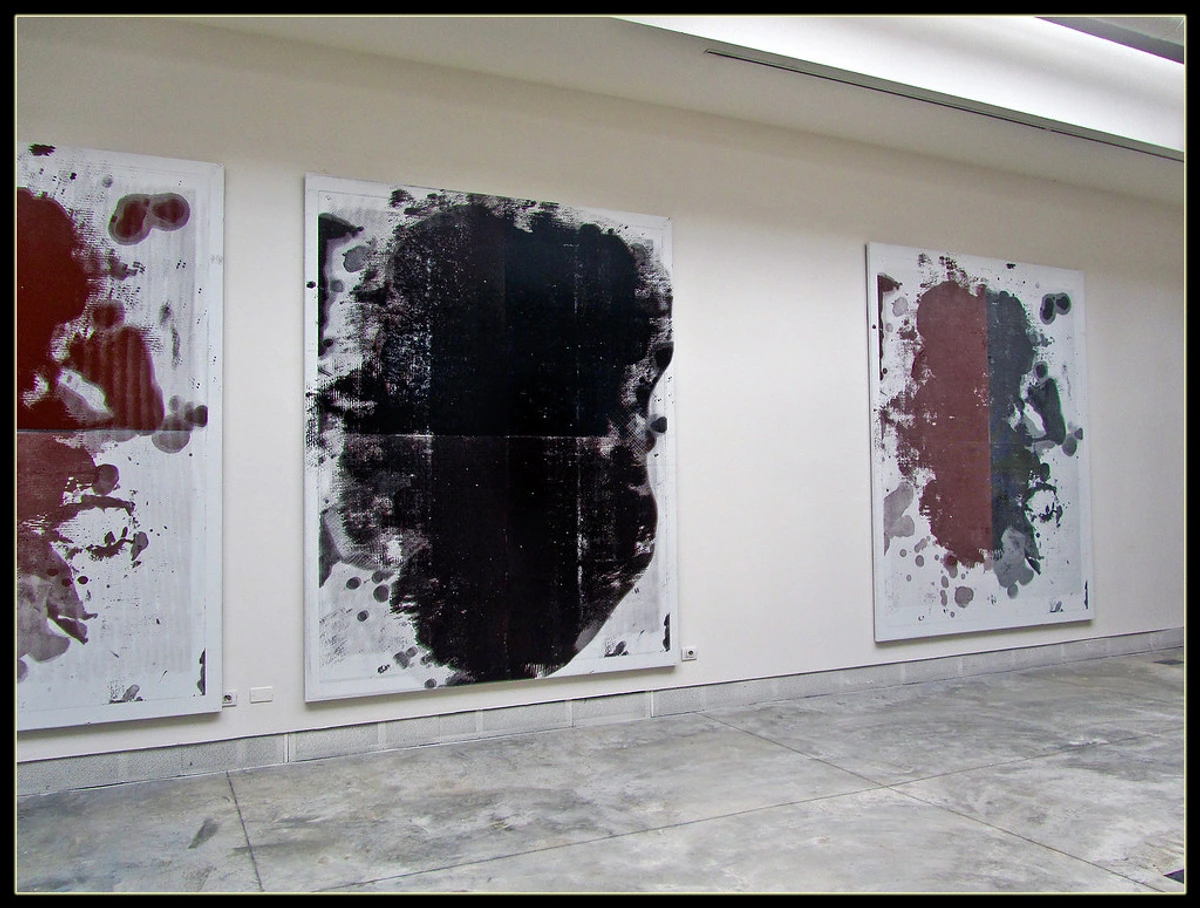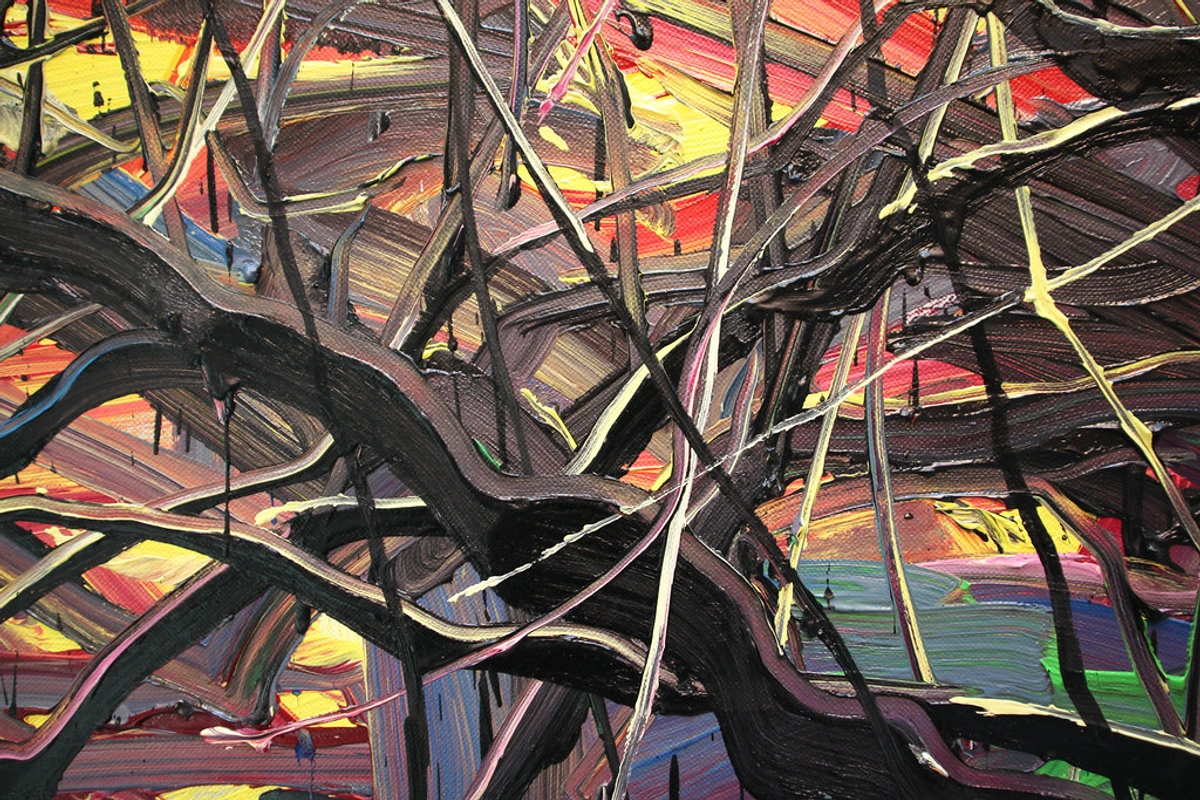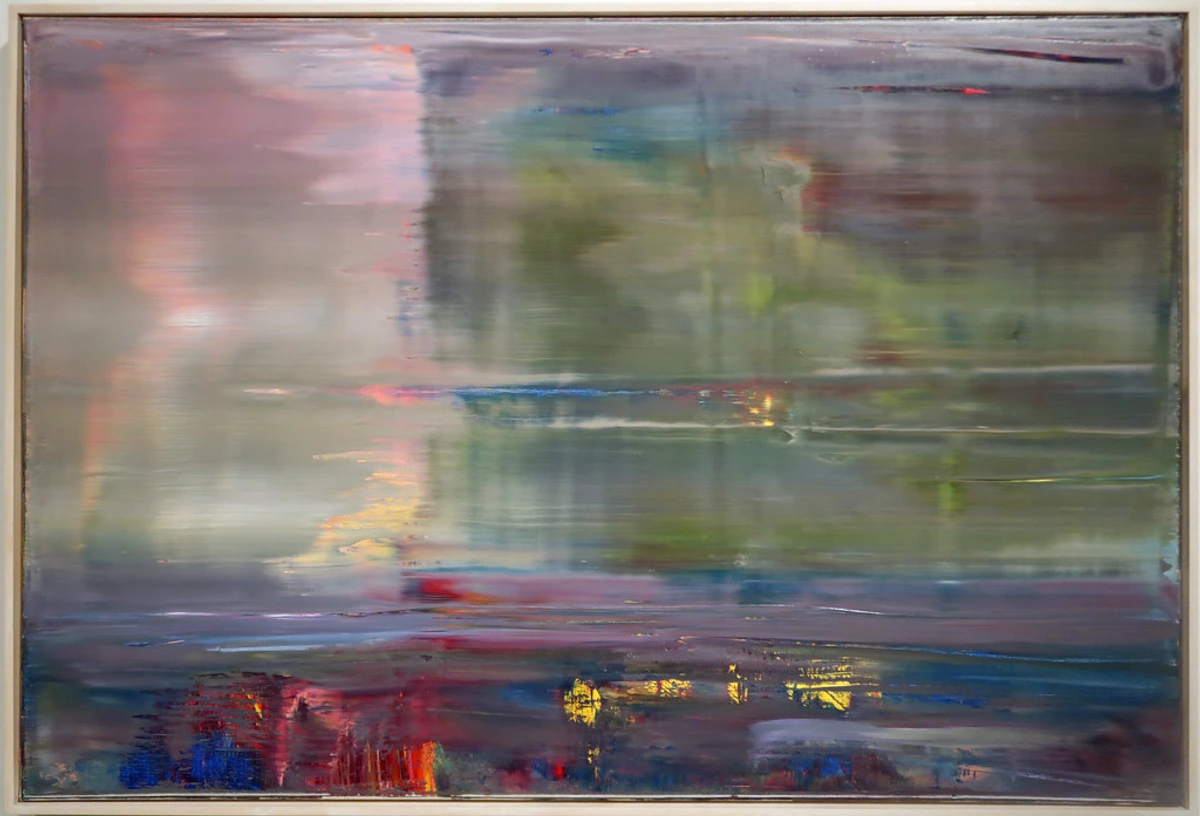
Abstract Mixed Media Art: My Personal Journey Beyond the Canvas
Dive into my personal journey through abstract mixed media art. Discover how I transform unconventional materials and explore unique layering techniques to find liberating creative freedom, embracing chaos to craft compelling, textured art that tells a story. Learn about my philosophy, process, and practical tips.
Beyond the Canvas: My Journey into Abstract Mixed Media Art
You know, sometimes, even with all its promise, a traditional canvas can feel... deafeningly quiet. I recall one stifling afternoon, wrestling with a portrait that felt utterly lifeless despite layers of expensive oil. Not just literally quiet, but creatively. I’d stare at that pristine white rectangle, a blank slate demanding a singular, polished vision, and instead feel a distinct lack of conversation – a silence that didn't align with the vibrant cacophony of ideas, the gritty textures, and the layered stories clamoring inside my head. My artistic soul yearned for more than mere paint could offer; it craved a deeper, more tactile dialogue with materials that went beyond the smooth, flat surface. Traditional painting, with its inherent lack of dimensionality and direct incorporation of found objects, felt too confined for the raw textures and layered narratives I envisioned. That yearning, that restless whisper, is precisely where my journey into abstract mixed media truly began – a delightful, often messy, and utterly liberating adventure.
It wasn't a sudden rejection of painting, more an expansion. Like a chef who's mastered classical cuisine but then discovers the intoxicating world of fusion, adding unexpected spices and ingredients that elevate everything. For me, the canvas, while foundational, became a launchpad to explore the tactile, the layered, the wonderfully unconventional.
The Call of the Unconventional
I've always been drawn to the unexpected, to finding beauty in the overlooked. And frankly, sometimes, I get a bit restless. Monotony is the enemy of creativity, wouldn't you agree? I wanted my art to reflect that restless spirit, that constant urge to push boundaries. Pure paint, while expressive, can sometimes feel too contained for the whirlwind of ideas in my head.
I remember grappling with a series inspired by ancient ruins, trying to evoke the crumbling majesty, the silent echoes of time. Pure paint, no matter how thickly applied, felt too smooth, too ephemeral, like a whisper when I needed a roar. I wanted the roughness of ancient plaster under my fingertips, the distinct, crumbling weight of a forgotten pillar, the echoes of footsteps on uneven stone – sensations that paint alone simply couldn't convey. It was then that I started embedding actual sand, small shards of plaster, and even torn, aged paper into the paint. Suddenly, the surface became a landscape, each fragment a fossilized story, truly embodying the essence of the role of texture in abstract art.
My Personal Palette of Possibilities: A Medley of Materials
Ever peeked into an artist's studio and wondered if you've stumbled into a very particular kind of organized chaos? This is where the real fun, and sometimes the delightful chaos, begins. My studio often looks like a recycling center met an art supply store and had a rather enthusiastic party. I've become a magpie for materials, constantly scanning the world for elements that whisper, "Use me!"

Just last month, I found a discarded piece of rusted corrugated metal, twisted into an almost sculptural form, while walking by an old abandoned factory. It whispered to me – not just "use me," but "I have a past." It now lies embedded, a silent testament to forgotten industry, in one of my recent urban abstract pieces. Another time, I rescued a discarded circuit board from an old stereo, its intricate green lines and tiny metallic components now form the skeletal structure of a piece exploring digital landscapes.
Material | Primary Effect/Purpose | Personal Connection/Why I Love It |
|---|---|---|
| Paper Scraps | Sense of history, quiet narrative | Echoes of forgotten stories, a whisper from the past (e.g., layered fragments of old maps or forgotten letters to suggest concealed narratives) |
| Fabrics | Unexpected softness or surprising coarseness | Adds a touch of warmth, unexpected flow, or raw edge (e.g., a frayed denim patch for urban decay, or delicate lace for poignant fragility) |
| Sand, Grit, Plaster | Building tangible texture, foundational quality | The earthy, grounding element; connecting to raw earth and time (e.g., creating the raw, weathered surfaces of forgotten walls or ancient landscapes) |
| Pastels, Charcoal, Inks | Different marks, subtle shifts in tone, organic flow | Immediate, visceral marks; pure expression (e.g., swift, gestural marks capturing fleeting moments of energy) |
| Found Objects | Little secrets, unexpected jewels, unique character | The thrill of discovery, giving new life to forgotten things (e.g., rusted gears evoking industrial decay, or broken glass shards shimmering with forgotten light) |
| Thread/Wire | Linear elements, delicate or strong texture | Structural, yet flexible; connecting points, creating tension (e.g., weaving intricate webs that physically connect disparate elements) |
| Natural Elements (Leaves/Bark) | Organic forms, connection to nature, earthy tones | Bringing the outside in; a fleeting moment preserved (e.g., pressed leaves embodying the transience of nature, or bark pieces for rugged texture) |
| Metal Foils | Reflective surfaces, distressed effects | Shimmering accents, hints of light, subtle decay (e.g., crumpled for industrial grit, or smoothed for reflective, unsettling light) |
| Gesso/Mediums | Creating tooth, building layers, preparing surfaces | The unsung heroes; binding, building, transforming the surface (e.g., building up impasto layers that create miniature geological formations, or using heavy gel medium for extreme impasto and molding paste for sculptural forms) |
And yes, acrylics are still my faithful companions, but now they dance with these other elements, seeping into fabrics, glazing over paper, or pushing against rough grit. It's a controlled chaos, a delightful mess that, somehow, always finds its harmony. If you're interested in really getting hands-on, you'll love exploring texture in abstract art.

This kind of layered, often scraped-back texture, deeply reminiscent of the profound textural explorations by masters like Gerhard Richter, particularly his 'Abstrakte Bilder' series where paint is pushed, pulled, and revealed in layers. His 'squeegee' technique, pushing paint across the canvas to reveal what lies beneath, became a profound metaphor for my own desire to build, then deconstruct, to scrape back layers and reveal the hidden histories and accidental beauty within my abstract surfaces, a process that continues to fuel my work.
Techniques Unbound: Layering My Story
Ready to explore the symphony of textures and stories? While my journey is personal, the concept of mixed media art has a rich, rebellious history, with roots tracing back beyond even the Cubist collages of Picasso and Braque, and the radical Dadaist assemblages of artists like Kurt Schwitters' 'Merzbau.' These early 20th-century pioneers broke free from traditional art forms, daring to integrate everything from newspaper clippings to bus tickets, paving the way for the layered, multi-dimensional works we see today. Their audacious rejection of convention echoed a deep-seated feeling within me—a desire to break free, to allow the raw truth of materials to speak beyond traditional confines. My own work builds on that rebellious spirit.

Mixed media isn't just about what you use, but how you use it. The techniques are what truly bring these disparate elements into a cohesive whole, building depth and whispering stories.
Technique | Primary Outcome/Effect | Personal Twist/How I Use It |
|---|---|---|
| Layering | Adds history, hides secrets, creates time and evolution | Building archaeological digs of paint and paper (e.g., burying text or subtle imagery to create hidden narratives that emerge upon closer inspection) |
| Collage | Creates new visual language from varied sources | Weaving narratives from found imagery and text (e.g., assembling disparate images and texts to construct new, often surreal, dialogues) |
| Assemblage | Incorporates 3D objects, breaks 2D plane | Bringing sculptural depth, a tangible presence (e.g., attaching found objects that literally break the picture plane, adding sculptural depth and presence) |
| Impasto (with a twist) | Creates dramatic, sculptural textures with embedded materials | Building mountains and valleys, with materials as fossils (e.g., combining thick paint with embedded elements to create miniature topographical maps of emotion) |
| Decollage | Reveals layers by removing material, reverse collage | Unearthing hidden colors, a glimpse into the past (e.g., tearing away layers to expose fragmented colors or forgotten marks beneath, like an archaeological dig) |
| Transfer | Incorporating images/text from other sources | Ghostly echoes of memories, fragmented narratives (e.g., ghosting fragmented photographs or hand-written notes onto the surface, hinting at past lives) |
| Stitching | Adds linear texture, connection, or repair | Connecting disparate elements, a visual mending (e.g., mending torn paper with thread, creating visual metaphors for repair, vulnerability, or unexpected connections) |
| Frottage | Capturing textures from surfaces by rubbing | Revealing the hidden world of surfaces, textural fingerprints (e.g., capturing the texture of a worn brick wall or an old wooden floor, imprinting the physical world) |
| Stamping | Repeating patterns or unique marks | Creating rhythm, or a singular, impactful statement (e.g., repeating a personal symbol or an abstract mark to create rhythmic patterns or emphatic declarations) |
While impasto painting traditionally involves thick paint, in mixed media, I combine that with embedded materials – sand, fabric, even small found objects – to create even more dramatic, sculptural textures.
I vividly recall one piece where I tried to incorporate a delicate piece of lace, expecting it to absorb the gesso beautifully. Instead, it became a rigid, distorted, almost alien form. My initial reaction was pure frustration, convinced I'd ruined it. But as I sat with it, that accidental distortion began to suggest a new narrative – perhaps a commentary on fragility versus resilience. It taught me that sometimes, the most profound artistic discoveries emerge from the moments we initially label 'mistakes.'
The process is often intuitive. I don't always start with a clear plan, allowing the materials themselves to guide me, to suggest the next step. It's a constant dialogue between my intention and the unpredictable nature of the elements.
The Freedom and the Fear (Embracing Abstraction)
For me, mixed media is inherently intertwined with abstract art. It's a medium that liberates you from the tyranny of needing to represent something tangible. Instead, it invites you to explore pure emotion, energy, and form.
The very nature of combining disparate materials – each with its own history, form, and texture – inherently pushes the artwork beyond literal representation. When you layer found objects, fabric, and paint, the focus shifts naturally to the interplay of textures, colors, and forms, compelling you to interpret the piece not as a copy of reality, but as an expression of pure emotion and abstract narrative.

Sometimes, I admit, a piece in progress can look less like art and more like a toddler's most enthusiastic, glitter-glue-and-noodle-encrusted art project gone spectacularly awry. I’ve definitely had moments where I’ve stared at a sticky, lumpy, unidentifiable mess, wondering if I'd truly lost my artistic mind. Like that time I decided glitter glue, combined with a freshly painted wet layer, would be 'interesting' – turns out, 'interesting' was a polite word for 'sticky, perpetually damp, and regretful.' But in those moments of delightful chaos, I remind myself: these "failures" are simply spectacular experiments, the necessary detours on the path to something truly original. (Or at least, that's what I tell myself as I painstakingly peel off a particularly stubborn layer of misguided enthusiasm and dried pasta).
The real freedom comes from embracing that spontaneity. It's like the art of intuitive painting but with an even wider array of tools. You're not trying to copy reality; you're creating a new one, one that speaks directly to the subconscious. If you've ever felt lost in the swirls and splatters, a guide to decoding abstract art might help connect the dots.
More Than Just Art: A Personal Philosophy
My journey into mixed media isn't just about art techniques; it's a reflection of a personal philosophy. It's about breaking rules, pushing boundaries, and finding unexpected connections – not just with paint and paper, but in life itself. This artistic philosophy profoundly influences how I navigate the world.
Just as I find beauty in the discarded fabric or the rusted metal, I've learned to see the inherent value and potential in 'imperfections' or overlooked aspects of life, realizing that what others might cast aside can become the most compelling element of a new narrative. It's like how I approach my old, slightly creaky wooden desk; others might see wear and tear, but I see the character etched by years of creative work, the stories in every scratch. I wouldn't trade it for a pristine, factory-new one. It’s also like tending a garden – you prepare the soil, plant the seeds, but then you have to trust the unpredictable dance of nature, adapting to unexpected growth or delightful weeds that add character.
And speaking of delightful chaos, it's also a bit like how I approach a particularly baffling piece of flat-pack furniture; I'll definitely consult the instructions, but if a crucial screw is missing, I'm not above trying a well-placed zip tie or a bit of industrial-strength glue. Sometimes, the 'wrong' tool is exactly what you need to make it work – or at least, to stop it wobbling quite so much.
This constant evolution in my artistic practice is very much part of my broader timeline as an artist.
From Studio Chaos to Home Harmony
The process of creating a mixed media piece can be a whirlwind of materials, glues, paints, and delightful debris. But the goal is always to transform that chaos into a cohesive, compelling piece that speaks volumes without saying a word. I recall one piece, a sprawling collage built from discarded maps and old architectural plans, that started as a total enigma in my studio. It looked like a fragmented city, a beautiful mess.
But when a client sent me a photo of it in their sleek, minimalist living room, the transformation was palpable. It didn't just 'fill' the space; it activated it, turning what could have been stark into something profoundly rich and layered. They wrote to me saying, "It feels like the piece has always belonged here, adding a story we didn't know we were missing, a sense of lived history and unexpected depth." It wasn't just 'art' anymore; it was an integral part of their narrative, a silent companion reflecting their own journey.

Unlike a purely painted canvas that might offer a single, flat visual plane, a mixed media piece invites prolonged interaction. Its varied textures and embedded elements catch the light differently throughout the day, revealing new details and whispering different narratives with every glance. It’s less about a static image and more about a dynamic, evolving landscape that enriches the environment it inhabits. These pieces, with their rich textures and layered narratives, translate beautifully into diverse living spaces. They add depth, character, and a unique focal point that pure paint might not always achieve. If you're curious about how my artworks make their way from my studio to your living room, you can read more about my process of creating and placing abstract art. And of course, if you're curious about my finished works, you can always browse the collection.
Just as Zeng Fanzhi's work masterfully uses its dynamic interplay of thick, often tangled lines over vibrant, multi-colored brushstrokes to create a powerful abstract statement, his ability to create a sense of controlled tension and underlying narrative through his layering and expressive brushwork directly inspires my own pursuit of weaving disparate elements into a cohesive, compelling visual story that finds its ultimate harmony within the lived spaces of others.
FAQ: Unraveling the Mixed-Media Mystery
Thinking about venturing into mixed media or just curious? Here are some common questions I hear:
Q: What exactly makes something "mixed media"? A: Generally, it means incorporating two or more distinct art materials or elements that would traditionally be considered separate. It goes beyond just using different colors of paint; it's about combining different types of mediums, like paint and collage, or paint and sculpture.
Q: Is mixed media art durable? A: Absolutely, when done correctly! Using archival quality materials and proper adhesives and sealants ensures the piece is just as durable, if not more so, than a traditional painting. It's all about knowing your materials.
Q: How do you frame or display mixed media pieces, especially with dimensional elements? A: It depends on the dimensionality! For flatter pieces, traditional framing with or without glass works. For pieces with significant 3D elements, a shadow box frame is ideal. Sometimes, the piece might be on a deep panel, making framing unnecessary – the sides become part of the art.
Q: Can a beginner start with mixed media? A: Absolutely! Mixed media is incredibly forgiving and encourages experimentation. There are no strict rules, which can be wonderfully liberating for someone just starting out. Just gather some materials you like and play! Start with a simple collage on a sturdy piece of cardboard or heavy paper. Gather old newspaper clippings, magazine cutouts, fabric scraps, string, and even dried leaves. Use a basic PVA glue (like white school glue) to adhere them. Don't aim for perfection; just explore how the different materials feel together, how they absorb paint or interact with ink. It's about play and discovery, not a masterpiece.
Q: What surfaces are best for mixed media art? A: For mixed media, you need a sturdy surface that can handle various layers and moisture without warping. My favorites include wood panels (especially cradled boards for deeper pieces, I love their solid, almost sculptural presence, providing a stable foundation for the wildest experiments), heavy watercolor paper (300lb/640gsm or more), and stretched canvas primed with several layers of gesso. Cardboard or found objects can also be great for experimentation!

Q: Are there any safety considerations when working with mixed media? A: Yes, absolutely! Always ensure good ventilation when using sprays, strong adhesives, or certain solvents. Wear gloves if you have sensitive skin or are working with messy materials. Use appropriate tools for cutting or shaping, and always be mindful of sharp objects. Read labels on all your materials for specific safety warnings.
Q: How do you approach color in abstract mixed media, especially with so many different materials? A: Color in mixed media is a fascinating challenge! I often start with an intuitive palette, allowing the inherent colors of my found materials – the faded yellows of old paper, the rust of metal – to guide me. Acrylics become my dancers, flowing over and through textures, sometimes transparently glazing, sometimes opaquely asserting. The key is to see how different materials interact with light and pigment; fabric might absorb color differently than gesso, or metal might reflect it. It's a constant, playful negotiation, often surprising me with unexpected harmonies.
Q: Where do you find inspiration for your mixed media pieces? A: Inspiration is everywhere! I often find it in the forgotten corners of urban landscapes – rusted metal, crumbling walls, discarded circuit boards. Nature also plays a huge role; the patterns in bark, the textures of leaves, or the erosion on rocks. Sometimes, it's a specific memory or an emotion I want to evoke. The key is to keep an open mind and a curious eye, seeing potential narratives in the most unexpected materials.
Q: What are some common beginner mistakes in mixed media and how can I avoid them? A: One common mistake is overworking a piece, losing the spontaneity. Try to know when to stop and let the piece breathe. Another is using too much water with collage elements, which can lead to warping or buckling – use minimal adhesive. Don't be afraid to experiment, but also learn from what doesn't work. Embrace the unexpected, but also learn to control your chaos.
Q: How do you know when a mixed media piece is 'finished'? A: This is perhaps the most challenging question for any artist, especially in intuitive mixed media! For me, a piece is finished when it achieves a sense of internal harmony, when the materials stop clamoring for attention and begin to sing together. It’s less about reaching a predefined outcome and more about a feeling of quiet completeness, a moment where adding or subtracting anything would disrupt its delicate balance. Sometimes, I step away for days, weeks even, and then return with fresh eyes. If it still holds that quiet, resonant energy, it’s done. If it still feels like it's 'wobbling,' metaphorically speaking, then I keep working.
Q: How do you store or transport mixed media pieces, especially those with delicate elements? A: Careful handling is key! For pieces with significant dimensionality, I use custom-built crates or sturdy art boxes, ensuring there’s no pressure on raised elements. Soft, archival padding (like foam or acid-free tissue) around the artwork is essential. For flatter pieces, archival sleeves or glassine paper can protect the surface before transport. Always avoid extreme temperature changes or high humidity, as these can affect adhesives and materials over time. Think of them as precious artifacts, because, in a way, they are!
Conclusion: A Never-Ending Exploration
My journey into abstract mixed media isn't a destination; it's a continuous, evolving exploration. It's taught me that creativity knows no bounds, and that sometimes, the most profound expressions come from breaking free from the familiar, from embracing the unexpected conversation materials can have with one another. It's a conversation with materials, a dance with textures, and a deeply personal way of translating the vibrant, often chaotic, abstract world inside me onto a tangible surface. These textures and stories truly come alive when viewed up close, so if you ever find yourself near 's-Hertogenbosch, I warmly invite you to visit my museum: Den Bosch Museum.
If you've ever felt that creative itch to go "beyond the canvas," I wholeheartedly encourage you to take the leap. Gather some unconventional materials, embrace the mess, and see what magic unfolds. You might just discover a whole new language for your artistic soul.




